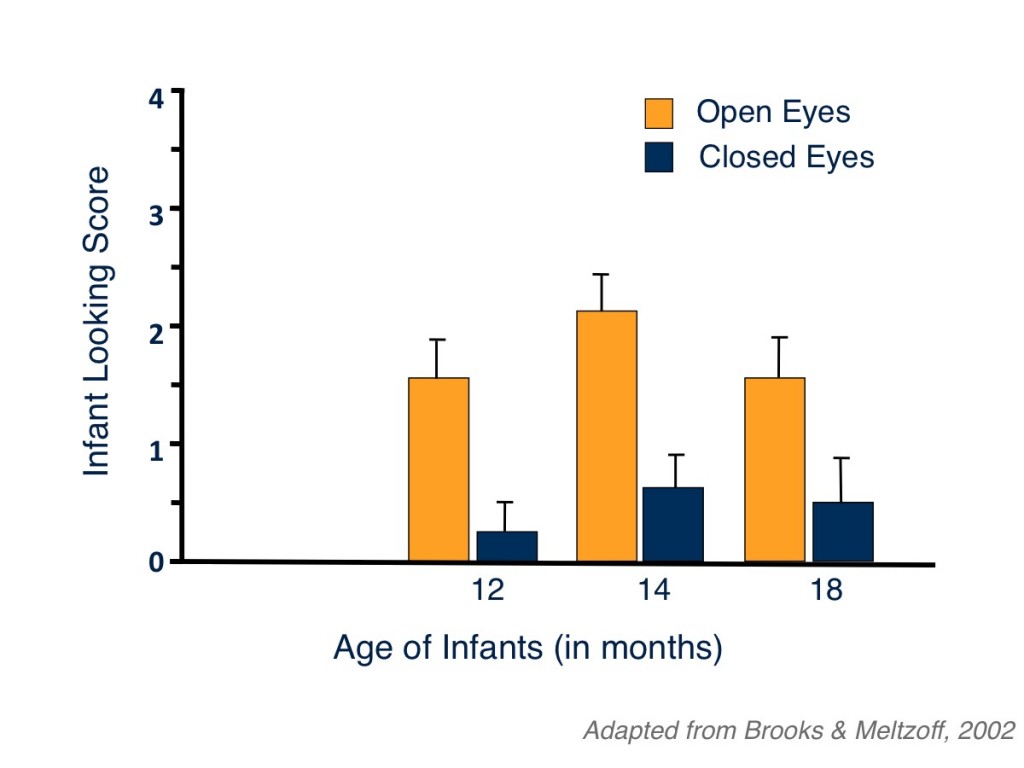
This graph shows the results from the open-eye, closed-eye study. The vertical line (or y-axis) on the graph represents the looking score. The looking score is how consistently children looked at the toy to which the experimenter turned her head. The horizontal line (or x-axis) shows the different ages (in months) of children tested. The yellow bars represent children’s looks when the experimenter’s eyes were open. The blue bars show children’s looks when the experimenter’s eyes were closed. For adults this is an easy test because they know that we see with our eyes but not with our head. What do infants do?
The 12-, 14-, and 18-month-olds all looked to the toy more consistently when the experimenter’s eyes were open compared to when her eyes were closed. Infants were also more likely to vocalize or point at the toy following an adult head turn with open eyes compared to closed eyes. During their second year of life, infants have a sophisticated understanding of eye gaze!
-
- Autism Spectrum Disorder (ASD)
- a developmental disorder that impairs a child’s social and communication skills
- Directing attention
- using eye gaze or a gesture to direct another person’s attention to an object or event
- Following attention
- following another person’s eye gaze or gesture
- Gaze following
- looking at what another person is looking at
- Joint attention
- shared attention between social partners to an object or event